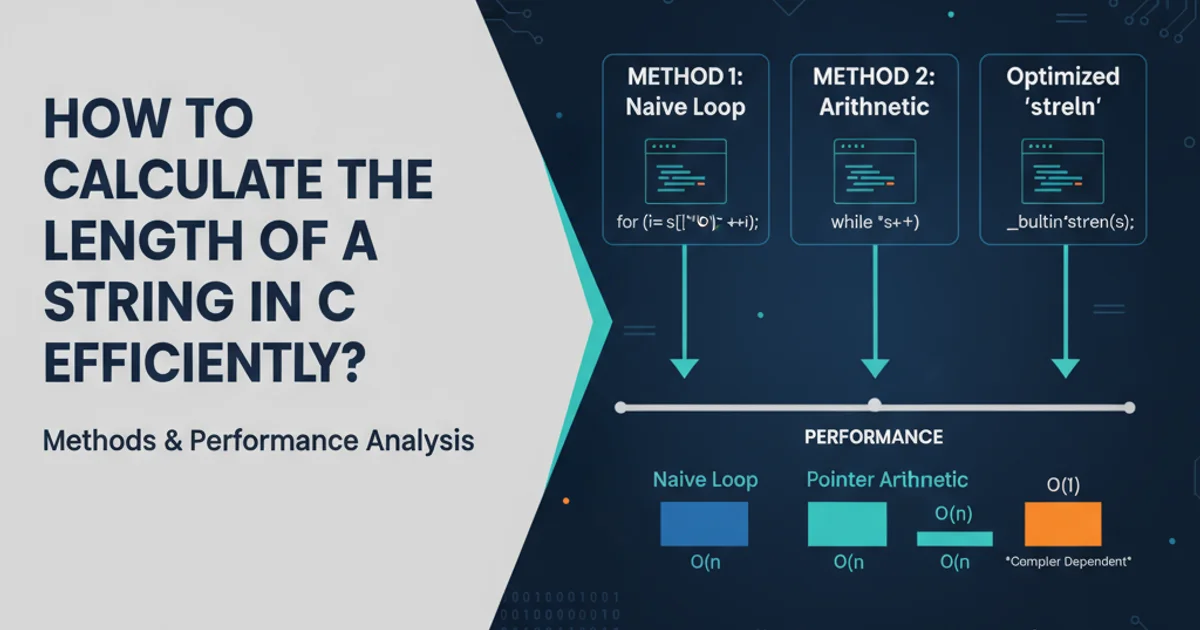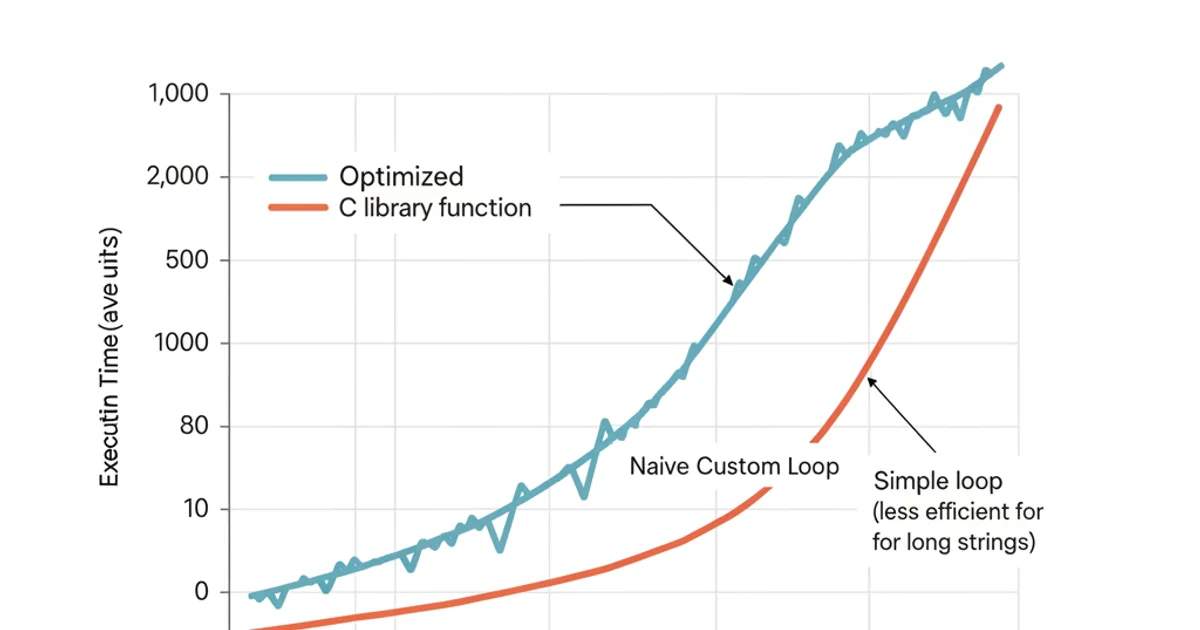How to calculate the length of a string in C efficiently?
Categories:
Efficient String Length Calculation in C

Explore various methods for calculating string length in C, focusing on performance, standard library functions, and manual implementations.
Calculating the length of a string is a fundamental operation in C programming. Unlike some higher-level languages, C strings are null-terminated character arrays, meaning their length isn't explicitly stored. Instead, it's determined by finding the first null character ('\0'). This article delves into efficient ways to perform this calculation, comparing standard library functions with custom implementations and discussing performance considerations.
Understanding C Strings and Length Calculation
In C, a string is a sequence of characters terminated by a null character. The length of the string is the number of characters before this null terminator. The most common way to find this length is to iterate through the characters until '\0' is encountered. This process is inherently O(n) where 'n' is the length of the string, as every character might need to be checked in the worst case.
flowchart TD
A[Start] --> B{Is current char '\\0'?}
B -- No --> C[Increment count]
C --> D[Move to next char]
D --> B
B -- Yes --> E[Return count]
E --> F[End]Basic String Length Calculation Logic
Standard Library Function: strlen()
The C standard library provides the strlen() function, declared in <string.h>, which is the most common and generally recommended way to calculate string length. It takes a pointer to a null-terminated string as input and returns the number of characters before the terminating null byte. Implementations of strlen() are often highly optimized for the target architecture, leveraging CPU-specific instructions to accelerate the search for the null terminator.
#include <stdio.h>
#include <string.h>
int main() {
char myString[] = "Hello, World!";
size_t length = strlen(myString);
printf("The length of '%s' is %zu\n", myString, length);
return 0;
}
Using strlen() to find string length
strlen() over custom implementations unless you have a very specific, performance-critical reason and are confident your custom code outperforms the library function for your specific use case and architecture.Custom Implementations for Learning and Specific Scenarios
While strlen() is usually the best choice, understanding how to implement it manually can be beneficial for learning or for highly specialized scenarios where you might need to avoid library calls or implement specific optimizations. Here are a few common approaches:
#include <stddef.h> // For size_t
// Method 1: Pointer Arithmetic
size_t my_strlen_ptr(const char *s) {
const char *p = s;
while (*p != '\0') {
p++;
}
return (size_t)(p - s);
}
// Method 2: Indexing
size_t my_strlen_idx(const char *s) {
size_t count = 0;
while (s[count] != '\0') {
count++;
}
return count;
}
// Method 3: Optimized (e.g., checking multiple bytes at once)
// This is a simplified example; real optimizations are complex and platform-specific.
size_t my_strlen_optimized(const char *s) {
const char *p = s;
// Align to word boundary (e.g., 4 or 8 bytes)
while (((uintptr_t)p & (sizeof(size_t) - 1)) != 0 && *p != '\0') {
p++;
}
// Check word by word
while (1) {
size_t word = *(size_t *)p;
// Check if any byte in the word is null
if ((word - 0x0101010101010101ULL) & (~word & 0x8080808080808080ULL)) {
break; // Null byte found in this word
}
p += sizeof(size_t);
}
// Fallback to byte-by-byte for remaining characters
while (*p != '\0') {
p++;
}
return (size_t)(p - s);
}
Custom strlen() implementations
strlen() implementation shown is a conceptual example. Real-world highly optimized strlen() functions often involve assembly language, SIMD instructions (e.g., SSE, AVX), and careful handling of unaligned memory access, making them significantly more complex and platform-dependent. Incorrect implementation can lead to crashes or incorrect results.Performance Considerations
The performance of string length calculation is primarily determined by the number of characters that need to be examined. For very short strings, the overhead of a function call might be noticeable, but for longer strings, the O(n) nature dominates. Modern strlen() implementations are highly optimized and often use techniques like:
- Loop Unrolling: Processing multiple characters in a single loop iteration.
- SIMD Instructions: Using Single Instruction, Multiple Data (SIMD) instructions (e.g., SSE, AVX on x86/x64, NEON on ARM) to compare several bytes simultaneously against the null terminator.
- Word-at-a-time Processing: Reading memory in larger chunks (e.g., 4 or 8 bytes) and checking if any byte within that chunk is null, then falling back to byte-by-byte checking if a null is detected.
These optimizations make strlen() incredibly fast, often outperforming naive custom loops written in C.

Conceptual performance comparison: strlen() vs. naive custom loop
strlen() and a well-written custom loop will be negligible. The primary concern should be correctness and readability. Only in extreme performance-critical scenarios, after profiling, should one consider writing a custom, highly optimized strlen().